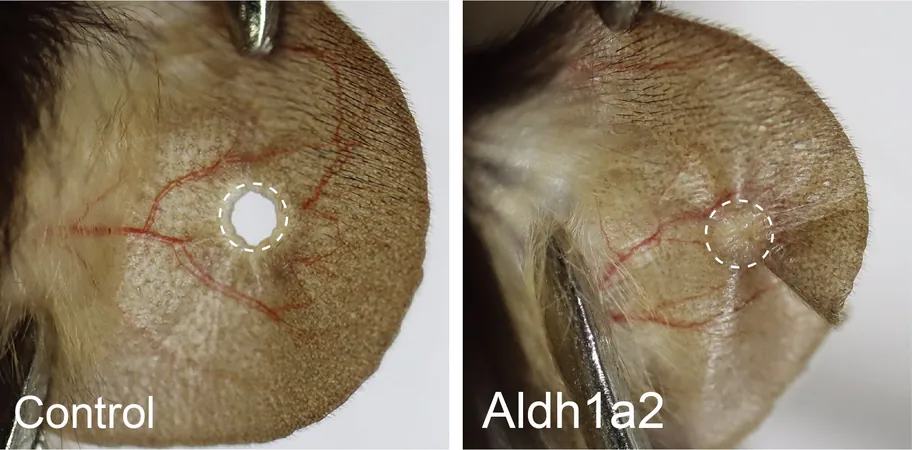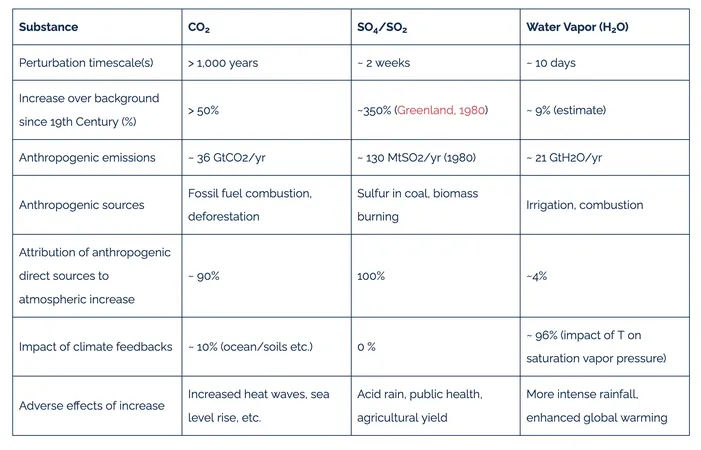
Unlocking Regeneration: How a Silent Gene Could Revolutionize Tissue Healing in Mice
2025-06-30
Author: Ming
A Groundbreaking Discovery in Tissue Regeneration
Researchers from the National Institute of Biological Sciences in Beijing have made an astonishing discovery: activating a seemingly dormant gene allows mice to regenerate ear tissue, a feat previously thought to be limited to certain vertebrates like salamanders and fish.
The Power of Regeneration in Nature
Some animals possess incredible abilities to regenerate complex tissues. Salamanders can regrow limbs, repair hearts, and even mend spinal cord injuries, while fish adeptly rebuild damaged structures. Mammals have some regenerative abilities, as seen in deer antlers and the remarkable healing of human livers, which can regrow up to 70% of tissue within weeks after injury.
Mammals’ Diminished Regenerative Powers
Despite these occasional abilities, most mammals have lost the extensive regenerative capabilities over evolution, opting instead for scarring—a mechanism that facilitates immediate survival by closing wounds. However, the capacity for regeneration still lurks in some species.
Exploring Regeneration in Mice and Rabbits
Previous studies have shown that specific strains of mice, like Murphy Roth's Large mice, can effectively regenerate ear tissue without scarring. They are capable of healing cartilage, dermis, epidermis, hair follicles, and even nerves. Remarkably, rabbits exhibit similar regenerative abilities, hinting that the trait may have originated from a common ancestor shared by these species.
The Genetic Analysis That Changed Everything
In a pivotal study published in Science, researchers conducted comprehensive genomic analyses across various species, comparing regenerative mammals with non-regenerative ones. By utilizing advanced techniques such as single-cell RNA sequencing and spatial transcriptomic profiling, they identified key differences in gene activity in cells crucial for tissue regeneration.
The Role of Retinoic Acid in Regeneration
The study revealed that rabbits generate retinoic acid before engaging in regeneration, synthesized by a specific enzyme. Mice, despite having this enzyme, produced insufficient retinoic acid to trigger regeneration. Excitingly, when researchers supplemented retinoic acid in non-regenerative mice, they witnessed a remarkable restoration of ear tissue.
A Genetic Breakthrough
To push the boundaries even further, scientists engineered transgenic mice equipped with a rabbit-derived genetic regulatory enhancer. This intervention prompted increased expression of the enzyme after injury, leading to partial regrowth of ear structures. However, it became clear that activating this single genetic element was not enough for full regeneration.
A New Era for Regenerative Medicine
The findings highlight the latent regenerative potential within non-regenerative mammals, opening up exciting new avenues for research in regenerative medicine. By understanding and harnessing these dormant genetic mechanisms, there’s hope for developing treatments that could allow for the regeneration of damaged skin, nerve, and cartilage tissues, potentially redefining healing methodologies.


 Brasil (PT)
Brasil (PT)
 Canada (EN)
Canada (EN)
 Chile (ES)
Chile (ES)
 Česko (CS)
Česko (CS)
 대한민국 (KO)
대한민국 (KO)
 España (ES)
España (ES)
 France (FR)
France (FR)
 Hong Kong (EN)
Hong Kong (EN)
 Italia (IT)
Italia (IT)
 日本 (JA)
日本 (JA)
 Magyarország (HU)
Magyarország (HU)
 Norge (NO)
Norge (NO)
 Polska (PL)
Polska (PL)
 Schweiz (DE)
Schweiz (DE)
 Singapore (EN)
Singapore (EN)
 Sverige (SV)
Sverige (SV)
 Suomi (FI)
Suomi (FI)
 Türkiye (TR)
Türkiye (TR)
 الإمارات العربية المتحدة (AR)
الإمارات العربية المتحدة (AR)